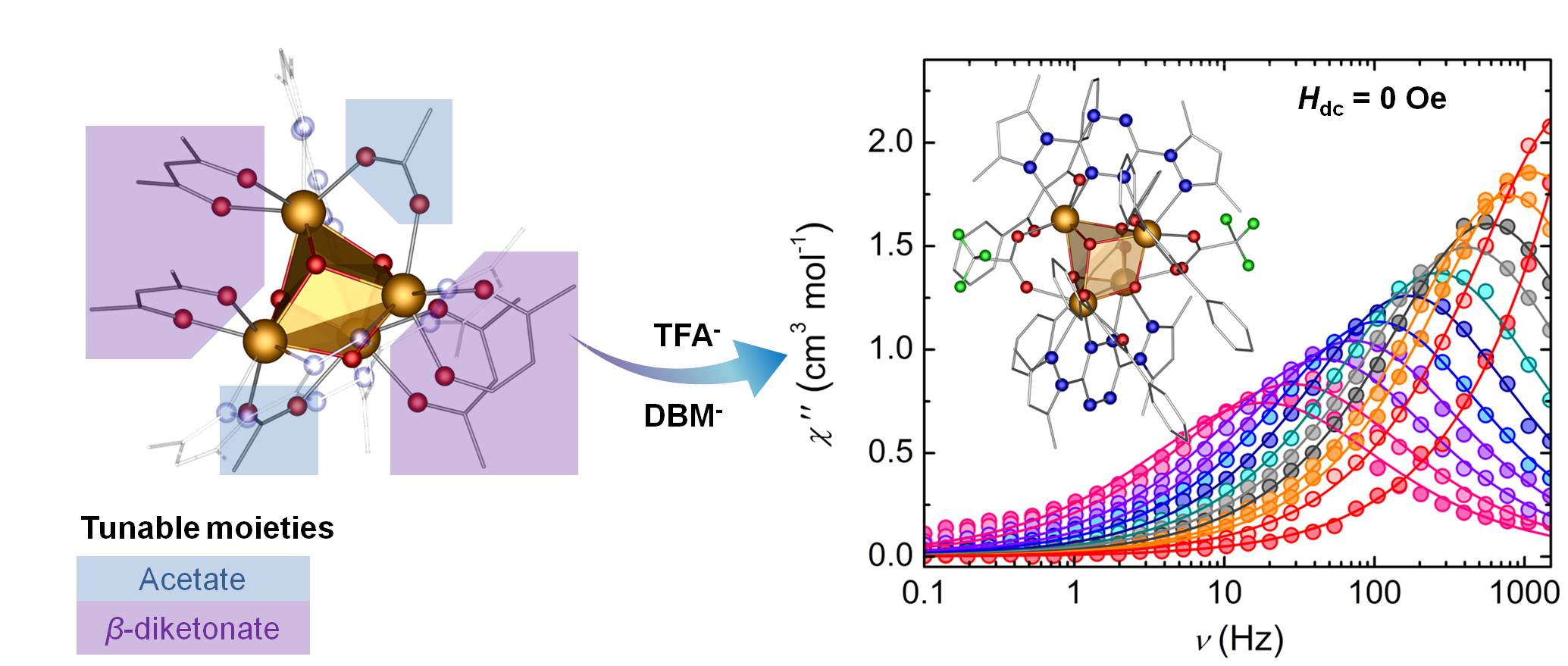A tunable lanthanide cubane platform incorporating air-stable radical ligands for enhanced magnetic communication
Published in Chemistry

The current state of modern society unequivocally demands new data storage devices capable of keeping up with the amount of data that humanity is producing. Single-molecule magnets (SMMs) represent one of the most fascinating avenues towards the miniaturization and improvement of magnetic data storage devices. As the name implies, SMMs consist of a discrete molecule that behaves as an individual nanomagnet. While many variations of SMMs have been explored over the years, such as single-ion magnets and single-chain magnets, this field of research will forever be intimately linked to that of large metal cluster-aggregates, as the first example of a molecule exhibiting magnetic bistability came in the form of a {Mn12} complex.
The initial success observed for large polynuclear transition metal-based SMMs, however, has not yet been fully extended to lanthanide-based cluster-aggregates. The reason behind this is in part due to the difficulty in magnetically coupling the core 4f orbitals of lanthanide ions. In transition metals, the magnetic orbital can actively participate in promoting certain magnetic behaviours through superexchange pathways that involve non-magnetic bridging ligands. As such, in our efforts to design novel nanomagnets, we sought promote strong magnetic communication between the spin carriers of high-nuclearity lanthanide clusters, which can potentially lead to high performing exchanged-coupled SMMs.
Our strategy focused on the utilization of a tunable platform, where chemical modifications can readily be introduced, as well as the incorporation of air-stable radicals. Chemical tunability is one of the best tools in the arsenal of a magneto-chemist; it not only allows for a greater understanding of how specific functional groups can impact the physical properties, but it can also allow us to rationally optimize a molecule for a desired application. Here, the stability of hydroxo-bridged cubane cores of dysprosium provides a framework in which chemical modifications are easily amenable. To overcome the difficulties related to the magnetic coupling of lanthanide ions, we employed an increasingly successful method that involves the bridging of metal centers with paramagnetic ligands. In such a case, the diffuse spin orbitals of the radical are better equipped to penetrate the deeply-buried 4f orbitals, potentially allowing for direct exchange coupling between the radical and lanthanide ion. The choice of a tetrazine-based linker stems from the fact that it is easily reducible and air-stable, a decisive advantage for any device fabrication.

Our results using this air-stable radical platform show that the addition of electron-donating groups on a specific ligand lead to enhanced magnetic coupling between the lanthanide and the radical ions. At the same time, we investigate the slow magnetic relaxation dynamics of the compounds, which revealed that the more strongly coupled species displays enhanced SMM properties. It is our hope that such studies will pave the way towards magnetically-relevant lanthanide clusters as we continue to seek new methods of storing data efficiently.
We encourage those interested to read our research article "A tunable lanthanide cubane platform incorporating air-stable radical ligands for enhanced magnetic communication" published in Communications Chemistry https://www.nature.com/articles/s42004-018-0090-3.
Follow the Topic
-
Communications Chemistry

An open access journal from Nature Portfolio publishing high-quality research, reviews and commentary in all areas of the chemical sciences.
Related Collections
With Collections, you can get published faster and increase your visibility.
Advances in Polymer Synthesis
Publishing Model: Open Access
Deadline: Jan 31, 2026
f-block chemistry
Publishing Model: Open Access
Deadline: Feb 28, 2026



Please sign in or register for FREE
If you are a registered user on Research Communities by Springer Nature, please sign in